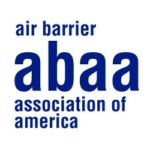
- This event has passed.
The Building Science Advisor: A Web-Based Tool to Assess the Energy Efficiency and Durability of Building Envelope Components
April 25 @ 1:00 PM - 2:00 PM EDT
According to the U.S. Department of Energy Windows and Building Envelope Research and Development Roadmap for Emerging Technologies, building envelope wall energy loss in the United States accounts for about 2 quads of energy annually, costing homeowners and occupants billions of dollars. Enclosure retrofits targeting these losses can save significant energy, reduce greenhouse gas emissions, and save occupants millions of dollars over time. Older homes, built before 1992 when DOE’s Building Energy Codes Program was established, represent approximately 68 percent of the residential building stock in the country, often having significant air leakage and inadequate insulation. Homes with little to no air sealing or insulation have heating and cooling losses that can represent a substantial portion of utility bills.
High performance building envelope retrofit systems are rarely selected for these applications. Current solutions are expensive and/or unfamiliar to many designers, builders, contractors, and code officials and therefore are perceived as risky. The dominant perceived risk is durability specifically related to condensation and moisture accumulation in the building envelope component.
The Building Science Advisor (BSA) is a rule-based expert system webtool that was originally developed to assist building professionals to design energy efficient and durable wall systems for new construction. With the present focus being placed on upgrading the existing building stock, a retrofit module has been developed that, based on the location, existing construction, and planned retrofit strategy, provides recommendations on how to address the retrofit in a manner that will not create a durability problem. This webinar will describe the development of this tool and demonstrate its features and capabilities.
Learning Objectives:
- What do standards require regarding the measurement of moisture intrusion today.
- What are other techniques that can be deployed in a wall assembly that can detect moisture intrusion.
- What are the advantages and disadvantages of these measurement techniques.
- What additional work is needed and planned to improve our test standards.
 Andre Desjarlais
Andre Desjarlais
André Desjarlais is the Program Manager for the Building Envelope and Urban Systems Research Program at the Oak Ridge National Laboratory. He has been involved in building envelope and materials research for over 45 years, first as a consultant and, for the last 30 years, at ORNL. Areas of expertise include building envelope and material energy efficiency, moisture control, and durability. Desjarlais has been a Member of ASTM since 1987 and serves on Committees C16 on Thermal Insulation, D08 on Roofing, and E60 on Sustainability. He is the past Chairman of ASTM Committee C16 and was awarded the title of Fellow in 2011. He has been a member of ASHRAE since 1991 and serves on Technical Committees TC 4.4 on Thermal Insulation and Building Systems, TC 1.8 on Mechanical Insulation Systems, and TC 1.12 on Moisture Control in Buildings, and is past Chairman of TC 4.4. André is also a founding director of the IIBEC/RCI Foundation.
